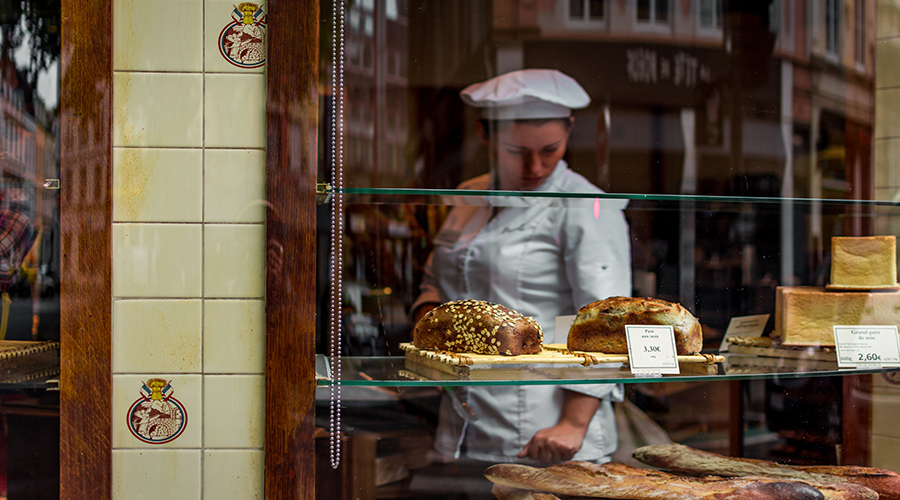There are three main theories about why a baker’s dozen is 13 instead of 12, but most people believe it stems from the fact. Many societies have had stringent laws regarding Baker’s wares because it is relatively straightforward for bakers to deceive customers and sell them less than they think they are getting. These communities took this very seriously since, for many people, bread was their primary food source.
Instance, in ancient Egypt, a baker caught defrauding someone would have their ear fastened to the bakery door. In Babylon, a baker discovered to have sold someone a “light loaf” would have his hand hacked off.
Today, in this post, we will see why a baker’s dozen is 13, not 12.
Let’s see together.
Table of content:
Baker’s Dozen
Here’s something less challenging: the background of the title. According to Asher, it all began with a play on Hannah’s last name, Baker. A “baker’s dozen” is thirteen; thus, a girl named Baker should have a dozen stories to tell. He gave the book its original title, Baker’s Dozen: The Autobiography of Hannah Baker. Even though it’s adorable, Thirteen Reasons Why still has a more menacing air. When we see the number 13, we automatically associate it with misfortune. This title effectively prepares us to read something equally ominous and frightening.
What proportion of donuts makes up a baker’s dozen?
Just a quick refresher of what a dozen implies before we discuss a baker’s dozen Twelve is one dozen. You receive 12 eggs when you buy a dozen. You receive 12 roses when you purchase a dozen. You should receive 12 doughnuts if you are buying a baker’s dozen. Wrong! You receive 13 donuts when you order a baker’s dozen. It’s pretty easy to remember, even though it sounds confusing. A baker’s dozen implies receiving an additional doughnut and the standard dozen (12 donuts). However, the definition of a baker’s gross is a little trickier. Check out the blog entry if you want to see how it stacks up against a baker’s dozen.
Baker’s Dozen History
So why is a baker’s dozen 13 pieces?
History goes back much further than you might think and is fascinating. In actuality, the phrase first appeared in 13th-century medieval England. Some dishonest bakers made their bread loaves and other baked goods smaller than necessary to boost their income. In this manner, they would receive more money when a consumer ordered from them than the proportionate cost of the materials. Naturally, the customers could have been more pleased. King Henry III swiftly enacted legislation to address the issue. He outlawed the sale of baked items that weren’t the right size or weight. Bakers who disobeyed this law could get a jail sentence or a beating.
The part yeast has played in a baker’s dozen’s past
You’ve ever attempted to make your bread, you know how challenging it may be. You can only sometimes predict precisely how your bread will rise or bake because of the numerous outside influences that can impact the entire process.
Yeast is the key to understanding why additional “insurance” bread was initially required in medieval England. Ultimately, how the yeast reacts and behaves inside the dough defines how dense or airy that bread will be. Yeast is what gives bread its structure, lifting and rising.
But because it is a living thing, yeast is naturally picky and unpredictable. And apart from the apparent fact that many of those bakers in the 13th century lacked access to scales, this is precisely why it was so difficult for them to calculate the weight of their baked goods precisely. The amount of air the yeast let develop within the dough ultimately determined whether two loaves of the same size weighed the same amount; therefore, a baker could only partially be confident.
Why Is a Baker’s Dozen 13?
Suppose you ask a farmer for a dozen eggs, a butcher for a dozen steaks, or a traveling office supply salesperson for a dozen pencils. In that case, you will almost certainly get 12 off your requested item. However, a baker’s dozen usually refers to 13. Do bakers have poor math skills? Not exactly.
A baker’s dozen became 13, according to a few theories, but the generally accepted one has to do with avoiding punishment. Laws regulating the price of bread and the cost of the wheat required to produce it existed in medieval England. Bakers were vulnerable to severe punishment, including fines or whipping, if it was discovered that they were “cheating” their clients by overcharging for tiny loaves.
It isn’t easy to guarantee that because many of these bakers didn’t even have scales to weigh their dough, there may be differences in the rising, baking and air content of your baked goods come out the same size, even with meticulous planning. Since many of these bakers didn’t even have scales to weigh their dough, there may be variances in rising, baking, and air content, making it difficult to guarantee that the results would be accurate.
A baker’s dozen: Our 12 plus 1 best baking tips!
1. USE SCALES
Baking is an exact science; using cups and spoons to measure can result in deviations of up to 10% to 20%. How, then, can you decide against buying a kitchen scale? They cost the same as a 10-kg bag of flour. Outstanding artisan bakers all over the world are leading by example, so all you have to do is hop on board if you want consistently excellent baking outcomes.
2. FOLLOW THE RECIPE AND REPEAT
A favorite recipe and stick with it for a while. Make the recipe as directed initially, then practice, tweak, and perfect it until it is precisely how you want it and can imagine it. If you follow this method rather than continually switching between recipes, you will learn a lot more and more rapidly.
3. MAKE NOTES
Special bread notebook and record all of the precise measurements for the room, oven, water, and dough temperatures each time you bake, Please write down your notes as you go; don’t rely on the fact that you’ll recall them the next time you bake; you’re probably not going to. If feasible, measure the temperatures of your water and dough using a digital thermometer. Keep a record of the outcomes and any improvements for the future.
4. CHECK YOUR TEMPERATURES
The most crucial factor in baking is choosing the proper temperature. If feasible, measure the water and dough using a digital thermometer. The bulk fermentation or final proofing length might vary greatly depending on a few degrees in the dough temperature. Our recipes’ proving timeframes are generally based on a dough temperature of about 24 °C (75 °F).
5. KNOW THAT TIME IS YOUR FRIEND IN MANY WAYS
For a baker, time and timing are everything. Giving the dough an adequate time will produce bread with more flavor and texture. It takes practice and careful attention to correct the timing and proof your bread perfectly to have a fantastic oven spring. Therefore, be careful to give your bread your whole attention and undivided time, and ensure no interruptions or errands to run while baking. The results will be better, and the baking experience will be much more laid-back!
6. DO NOT GET DISCOURAGED AFTER THE FIRST BAKE
If your first attempt at baking sourdough bread is not flawless, avoid getting disheartened. Everything about this is normal. Like with any baking, you must develop an understanding of your dough, including its peculiarities about your environment, materials, and ingredients. Numerous components must cooperate. Your less-than-perfect-looking loaf will still be perfect and even superior to anything you could buy at the supermarket in the interim. Additionally, practice is the only substitute.



